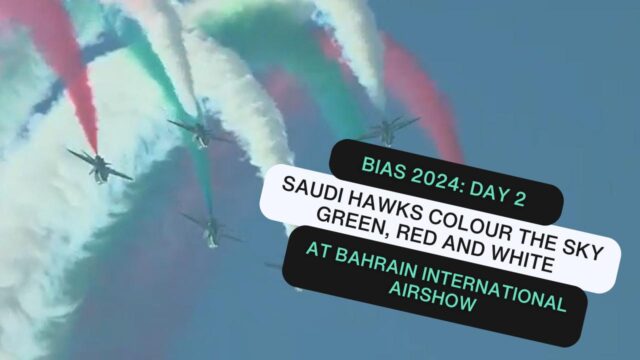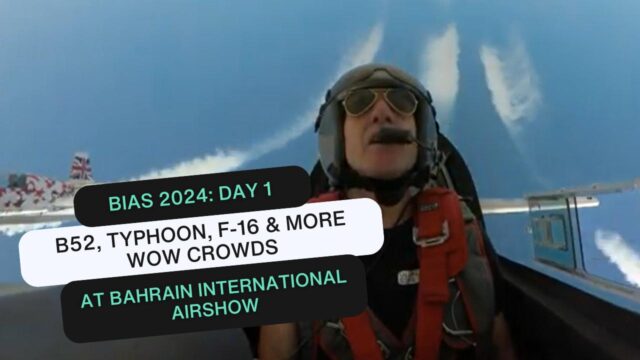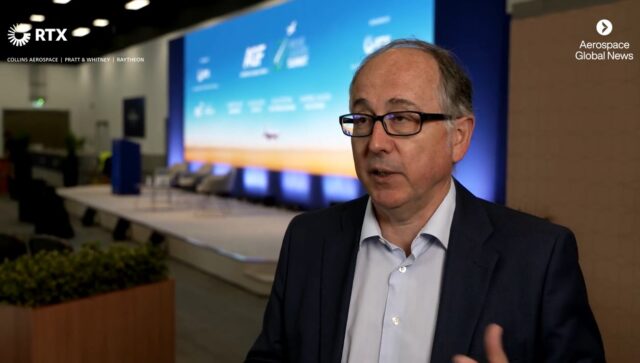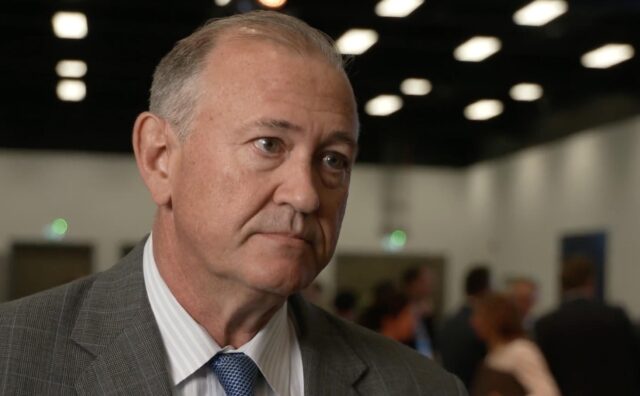Bruno Senna joins Airspeeder as development pilot
Racing driver Bruno Senna has joined Airspeeder as a pilot for the world’s first eVTOL racing series.
Senna who has raced in Formula 1, Formula E, FIA World Endurance Championship…
Racing driver Bruno Senna has joined Airspeeder as a pilot for the world’s first eVTOL racing series.
Senna who has raced in Formula 1, Formula E, FIA World Endurance Championship and a World eX winner has been announced as a racing development pilot and global ambassador for Airspeeder. He joins the series in the same week as FPV drone pilot Lexie Janson was announced as joining the pilot roster.
Senna joins Airspeeder ahead of the announcement of its first EXA remote piloted races which will see elite pilots fly full sized Mk3 Speeders blade-to-blade at speeds of up to 200km/h. He will play a key role in the development of the sport as well as the technical and dynamic development of the Speeders taking part in it. He will race in forthcoming remotely piloted EXA races and play a major role in the sport as it moves towards first crewed Airspeeder GPs in 2023 and beyond.
Senna’s background is “at the forefront of the sport”
Describing Senna as racing “royalty,” Airspeeder CCO Jack Withinshaw told FINN: “His experience in motorsports, drone racing is going to be pivotal in how this new sport is defined. We’re really excited to welcome him as an Airspeeder pilot. It’s a really exciting story, his background is at the forefront of sport. He’s been brought up in a motorsport household, working in Formula 1, Formula E, progressing into eSports as an esteemed eSports racer, then onto drones.”
“You can see the link that he would naturally end up in a place like Airspeeder… with a name like that and his background, we couldn’t say no.”
Senna said his new role would combine his passions: “I could not resist the opportunity to approach Airspeeder to be part of this incredible sport. In doing so I am proud to shape the world’s first racing series for electric flying racing cars. Airspeeder combines my passions for racing, flying and being part of the development of cutting-edge technology. I cannot wait to take control of these incredible vehicles and show the world the potential of a true next generation motorsport.”
“At my core I am a racer but I’m also a passionate technologist. I’ve been fascinated about the world-changing potential of the rapidly coming advanced air mobility revolution. As an Airspeeder pilot, I’m enormously excited to shape the place and space for the industry to rapidly develop the hardware and digital technologies that will deliver on the promise of electric flying cars. This is a role that motorsport has played from the start of the automobile age and I am proud to be echoing my racing forebears in pioneering a mobility revolution in the furnace of sporting competition.”
Senna has a long-standing personal interest in UAV flying and development and personally works on modifications for drones and iterative technical improvements that can be made through modifications and upgrades.
Applying race-craft from legacy motorsports to improve pit stops
As a development pilot he will work with the company’s leading team of engineers. They form Aluada Aeronautics (also founded by Airspeeder’s founder Matt Pearson), the designers and manufacturers of the Speeders that will take part in EXA and Airspeeder racing series. Their pedigrees includes a multi-F1 World Championship winning Ferrari composites engineer and senior talent from the development of hyper-cars at McLaren and senior Project Leaders from Airbus, Boeing and Rolls-Royce.
Senna has already identified significant functional and technical advantages over traditional legacy motorsports. For example, Senna is applying the race-craft he has developed over multiple disciplines to inform strategic approaches for pit-stops, which in the case of Airspeeder will initially deliver rapid battery swaps using a patented ‘slide-and-lock’ system. This insight is invaluable as teams effectively can build tactical philosophy from a blank sheet of paper, adding a highly compelling strategic layer to the sport.
“Racing with added vertical dimensions”
He added: “It’s fascinating when you consider racing with the added vertical dimension. As a driver, I’m excited to re-define racing lines, overtaking approaches and pit strategy within this highly dynamic environment. We are even considering how best to approach different dynamic conditions when following closely in preparation for an overtake. As Airspeeder pilots we are not limited by the same challenges of ‘dirty air’ when following closely. This will make for close, compelling and ultimately gripping racing for fans, whether they are coming to motorsport for the first time or are life-long followers of car racing.”
Senna joins a first intake of development pilots drawn from a diverse range of backgrounds. This includes Australia’s leading female racing driver, a highly-rated Drone Champions League (DCL) racer and one of the world’s leading FPV pilots.
FPV drone pilot Lexie Janson joins series
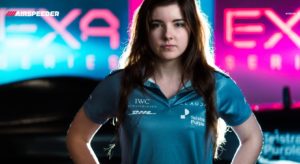 Senna joins Airspeeder shortly after FPV pilot Lexie Janson was announced as joining the series. Janson, who joined on International Women’s Day, has made her mark on the male-dominated FPV drone world since 2015 and is now taking the challenge to the next level as one of the world’s first flying car pilots.
Senna joins Airspeeder shortly after FPV pilot Lexie Janson was announced as joining the series. Janson, who joined on International Women’s Day, has made her mark on the male-dominated FPV drone world since 2015 and is now taking the challenge to the next level as one of the world’s first flying car pilots.
She said: “What I love most about working in my new role is the possibility of learning something new every day. Training to become the greatest racing pilot and taking part in the future that involves flying cars: it feels like living in sci-fi movies sometimes!”
The first racers were selected from more than 1,500 individuals drawn from the world’s of civil and military aviation, FPV flying, motorsport and even eSports. Senna will play a leading role in a rigorous process of training and development akin to that of an elite F1 or endurance racer. This will include banking more than 2000 collective hours on the Alauda Aeronautics 6-DoF VR simulator.
The EXA Racing Series will become the long-term development series for forthcoming Airspeeder crewed races. Senna and his pilot colleagues will play a vital role in refining the dynamic characteristics, controls and race-craft. Speeders will boast the same rapid hairpin-turning capability as a Formula 1 car. With the added dimension of vertical movement, pilots will eventually pull more than 6G. A figure comparable with the hardest rigours of more traditional motorsport.
Tracks will be presented through augmented reality
Senna and his colleagues will race across tracks presented to them utilising augmented reality technology presented to pilots on advanced Head Up Displays (HUD). This will then be relayed to viewers through a true pilot’s perspective. This is informed by Airspeeder’s philosophy to race in line with the sensibilities of an entirely new generation of race-fans. In doing so, this will bring in fans more native to eSports and live-streaming than traditional legacy motorsports.
The sport has been conceived for the era of global streaming, with sustainability ensured by not needing to build the normally highly impactful infrastructure traditional racing demands. The streaming aspect means that a global audience can enjoy and interact with races wherever they are in the world and at whatever time they choose to engage with the sport.
 
Subscribe to the FINN weekly newsletter
;
